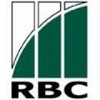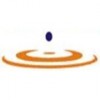
i
Verity Knowledge
Solutions
Filter interviews by
Verity Knowledge Solutions Investment Banking Analyst Interview Questions and Answers
9 Interview questions
Investment banking involves providing financial advisory services to corporations, governments, and other institutions for raising capital, mergers and acquisitions, and other financial transactions.
Helps companies raise capital through issuing stocks or bonds
Assists in mergers and acquisitions by providing valuation and negotiation services
Provides financial advisory services for various transactions such as IPOs...
Bonus share issue impacts financial statements by increasing equity on balance sheet, reducing retained earnings, and affecting earnings per share.
Increase in equity on balance sheet due to additional shares issued at no cost
Reduction in retained earnings as company's profits are distributed among more shareholders
Impact on earnings per share as number of shares outstanding increases
Share buybacks impact financial statements by reducing outstanding shares, increasing EPS, and affecting cash flow.
Share buybacks reduce the number of outstanding shares on the balance sheet.
This can increase earnings per share (EPS) as the same amount of earnings is distributed among fewer shares.
On the income statement, share buybacks can lead to higher EPS and potentially higher stock prices.
Share buybacks can ...
Line items in an Income Statement include revenues, expenses, gains, and losses.
Revenue: Sales of goods or services
Cost of Goods Sold (COGS): Direct costs related to producing goods sold
Gross Profit: Revenue minus COGS
Operating Expenses: Costs related to running the business (e.g. salaries, rent)
Operating Income: Gross profit minus operating expenses
Interest Expense: Cost of borrowing money
Net Income: Total profit...
The 3 financial statements are Income Statement, Balance Sheet, and Cash Flow Statement. Key ratios include ROE, ROA, and Current Ratio.
Income Statement shows a company's revenues and expenses over a period of time.
Balance Sheet provides a snapshot of a company's financial position at a specific point in time.
Cash Flow Statement tracks the flow of cash in and out of a company.
Key ratios like Return on Equity (ROE)...
Beta and alpha are measures of a stock's volatility and performance compared to a benchmark index.
Beta measures the volatility of a stock in relation to the overall market. A beta of 1 means the stock moves in line with the market, while a beta greater than 1 indicates higher volatility and less than 1 indicates lower volatility.
Alpha measures the excess return of a stock compared to its expected return based on i...
Beta is a measure of a stock's volatility in relation to the market. There are three types of beta: levered beta, unlevered beta, and adjusted beta.
Beta measures a stock's volatility in relation to the market. A beta of 1 means the stock moves in line with the market, while a beta greater than 1 is more volatile and less than 1 is less volatile.
Levered beta includes the effects of debt on a company's capital struc...
Cost of capital is the required return necessary to make a capital budgeting project, such as building a new factory, worthwhile.
Cost of capital is the weighted average cost of debt and equity used by a company to finance its operations.
It is the minimum return that a company must earn on its investments to maintain its market value and attract investors.
Calculating cost of capital involves determining the cost of...
Comparable company analysis involves evaluating a company's value by comparing it to similar companies in the same industry.
Identify comparable companies based on industry, size, growth prospects, and financial metrics.
Collect data on key financial metrics such as revenue, EBITDA, and multiples like P/E ratio.
Calculate valuation multiples for the comparable companies and apply them to the target company to estimat...
Verity Knowledge Solutions Investment Banking Analyst Interview Experiences
5 interviews found
I appeared for an interview in Oct 2024.
Basic Financial Accounting concepts
Email Writing
Logical Reasoning
(4 Questions)
- Q1. What goes in the line items of Income Statement?
- Ans.
Line items in an Income Statement include revenues, expenses, gains, and losses.
Revenue: Sales of goods or services
Cost of Goods Sold (COGS): Direct costs related to producing goods sold
Gross Profit: Revenue minus COGS
Operating Expenses: Costs related to running the business (e.g. salaries, rent)
Operating Income: Gross profit minus operating expenses
Interest Expense: Cost of borrowing money
Net Income: Total profit afte...
- Q2. What is Investment Banking?
- Ans.
Investment banking involves providing financial advisory services to corporations, governments, and other institutions for raising capital, mergers and acquisitions, and other financial transactions.
Helps companies raise capital through issuing stocks or bonds
Assists in mergers and acquisitions by providing valuation and negotiation services
Provides financial advisory services for various transactions such as IPOs, deb...
- Q3. Explain the impact of share buyback on the 3 financial statements.
- Ans.
Share buybacks impact financial statements by reducing outstanding shares, increasing EPS, and affecting cash flow.
Share buybacks reduce the number of outstanding shares on the balance sheet.
This can increase earnings per share (EPS) as the same amount of earnings is distributed among fewer shares.
On the income statement, share buybacks can lead to higher EPS and potentially higher stock prices.
Share buybacks can also ...
- Q4. Impact of bonus share issue on 3 financial statements.
- Ans.
Bonus share issue impacts financial statements by increasing equity on balance sheet, reducing retained earnings, and affecting earnings per share.
Increase in equity on balance sheet due to additional shares issued at no cost
Reduction in retained earnings as company's profits are distributed among more shareholders
Impact on earnings per share as number of shares outstanding increases
Interview Preparation Tips
(6 Questions)
- Q1. Financial statements
- Q2. Beta and it's types
- Ans.
Beta is a measure of a stock's volatility in relation to the market. There are three types of beta: levered beta, unlevered beta, and adjusted beta.
Beta measures a stock's volatility in relation to the market. A beta of 1 means the stock moves in line with the market, while a beta greater than 1 is more volatile and less than 1 is less volatile.
Levered beta includes the effects of debt on a company's capital structure.
...
- Q3. Cost of capital
- Ans.
Cost of capital is the required return necessary to make a capital budgeting project, such as building a new factory, worthwhile.
Cost of capital is the weighted average cost of debt and equity used by a company to finance its operations.
It is the minimum return that a company must earn on its investments to maintain its market value and attract investors.
Calculating cost of capital involves determining the cost of debt...
- Q4. Discounted cash flow
- Q5. Comparable company analysis
- Ans.
Comparable company analysis involves evaluating a company's value by comparing it to similar companies in the same industry.
Identify comparable companies based on industry, size, growth prospects, and financial metrics.
Collect data on key financial metrics such as revenue, EBITDA, and multiples like P/E ratio.
Calculate valuation multiples for the comparable companies and apply them to the target company to estimate its...
- Q6. Financial ratios
Interview Preparation Tips
I applied via Recruitment Consulltant and was interviewed in Jul 2023. There were 3 interview rounds.

(1 Question)
- Q1. Basic questions, mostly they will check your communication skills in the HR round.
(2 Questions)
- Q1. Few questions from the Resume.
- Q2. PE Ratio ROE ROIC Impact of Depreciation on the three statements. Tax Credit and Tax Exemption, which is more beneficial. Total Enterprise Value Minority Interest EPS Diluted EPS Trading Multiples like TEV...
Interview Preparation Tips
I applied via Referral and was interviewed before May 2023. There was 1 interview round.
(2 Questions)
- Q1. What is beta and alpha
- Ans.
Beta and alpha are measures of a stock's volatility and performance compared to a benchmark index.
Beta measures the volatility of a stock in relation to the overall market. A beta of 1 means the stock moves in line with the market, while a beta greater than 1 indicates higher volatility and less than 1 indicates lower volatility.
Alpha measures the excess return of a stock compared to its expected return based on its be...
- Q2. What are the 3 financial statements and key ratios
- Ans.
The 3 financial statements are Income Statement, Balance Sheet, and Cash Flow Statement. Key ratios include ROE, ROA, and Current Ratio.
Income Statement shows a company's revenues and expenses over a period of time.
Balance Sheet provides a snapshot of a company's financial position at a specific point in time.
Cash Flow Statement tracks the flow of cash in and out of a company.
Key ratios like Return on Equity (ROE), Ret...
I applied via Campus Placement and was interviewed before Feb 2023. There were 2 interview rounds.
(2 Questions)
- Q1. Finance basic questions
- Q2. Ratios and everything
(1 Question)
- Q1. Basic HR questions
Top trending discussions






Interview questions from similar companies

Investment Banking Analyst Interview Questions & Answers
Nomura Holdingsposted on 9 Apr 2023
I applied via Company Website and was interviewed in Oct 2022. There were 3 interview rounds.

Numerical, logical and reading
(2 Questions)
- Q1. Run me through a DCF
- Ans.
DCF is a valuation method used to estimate the value of an investment based on its future cash flows.
DCF involves projecting future cash flows, discounting them to their present value, and summing them up to arrive at a present value estimate.
The discount rate used in DCF is typically the weighted average cost of capital (WACC) or the required rate of return.
DCF is commonly used in investment banking to value companies...
- Q2. What are trading comparables?
- Ans.
Trading comparables are a valuation method used to determine the value of a company by comparing it to similar publicly traded companies.
Trading comparables involve analyzing financial metrics such as revenue, EBITDA, and P/E ratios of similar companies in the same industry.
This method assumes that the market values similar companies similarly, and can be used to determine a fair valuation for the company being analyze...
Interview Preparation Tips

I appeared for an interview before Feb 2020.
Interview Questionnaire
1 Question
- Q1. About Financial products likee share, derivatives Mutual fund, bonds, etc
Interview Preparation Tips

I applied via Naukri.com and was interviewed before May 2020. There were 3 interview rounds.
Interview Questionnaire
1 Question
- Q1. Tell me about yourself
- Ans.
I am a detail-oriented financial analyst with a strong background in data analysis and investment strategies.
Education: Bachelor's degree in Finance from XYZ University, where I graduated with honors.
Experience: Over 3 years of experience in financial modeling and forecasting at ABC Corp, where I improved reporting efficiency by 20%.
Skills: Proficient in Excel, SQL, and financial software like Bloomberg, enabling me to...
Interview Preparation Tips

I applied via Campus Placement and was interviewed in Jan 2021. There were 3 interview rounds.
Interview Questionnaire
4 Questions
- Q1. What is bond market?
- Ans.
Bond market is a financial market where investors buy and sell debt securities issued by corporations or governments.
Bonds are essentially loans made by investors to issuers
The bond market is important for companies and governments to raise capital
Bond prices and yields are inversely related
The bond market can be segmented by issuer, credit rating, maturity, and type of bond
Examples of bonds include Treasury bonds, cor...
- Q2. What is derivaties
- Ans.
Derivatives are financial contracts that derive their value from an underlying asset or security.
Derivatives can be used for hedging or speculation.
Common types of derivatives include options, futures, and swaps.
Derivatives can be traded on exchanges or over-the-counter.
Derivatives played a role in the 2008 financial crisis.
Derivatives can be complex and carry significant risk.
- Q3. What is option
- Ans.
An option is a contract that gives the buyer the right, but not the obligation, to buy or sell an underlying asset at a specific price on or before a certain date.
Options are commonly used in the stock market as a form of derivative trading.
There are two types of options: call options and put options.
Call options give the buyer the right to buy an underlying asset at a specific price, while put options give the buyer t...
- Q4. What is repo
- Ans.
Repo is a financial transaction where one party sells securities to another party with an agreement to buy them back at a later date.
Repo stands for repurchase agreement.
It is a short-term borrowing mechanism used by banks and other financial institutions.
The party selling the securities is known as the 'seller' or 'borrower', while the party buying the securities is known as the 'buyer' or 'lender'.
The interest rate o...
Interview Preparation Tips
Skills evaluated in this interview

I appeared for an interview before May 2023.
(5 Questions)
- Q1. Why apply for this position?
- Q2. Rate your Excel skills
- Q3. Have you worked for SQL?
- Ans.
Yes, I have worked with SQL extensively in my previous roles as a financial analyst.
I have experience writing complex SQL queries to extract and analyze financial data.
I have used SQL to create financial models and reports for management.
I am proficient in using SQL functions and joins to manipulate large datasets.
I have worked with databases such as MySQL, Oracle, and SQL Server.
- Q4. Any questions for us?
- Ans.
I'm curious about the company's growth strategy and how the finance team contributes to achieving its goals.
What are the key financial metrics you focus on to measure success?
Can you describe the company's approach to risk management?
How does the finance team collaborate with other departments, like marketing or operations?
What opportunities for professional development does the company offer for financial analysts?
- Q5. Introduce yourself
Skills evaluated in this interview
Verity Knowledge Solutions Interview FAQs
Some of the top questions asked at the Verity Knowledge Solutions Investment Banking Analyst interview -
Tell us how to improve this page.
Verity Knowledge Solutions Interviews By Designations
- Verity Knowledge Solutions Analyst Interview Questions
- Verity Knowledge Solutions Investment Banking Analyst Interview Questions
- Verity Knowledge Solutions Research Analyst Interview Questions
- Verity Knowledge Solutions Investment Banking Associate Interview Questions
- Verity Knowledge Solutions Financial Analyst Interview Questions
- Verity Knowledge Solutions Document Specialist Interview Questions
- Verity Knowledge Solutions Research Associate Interview Questions
- Verity Knowledge Solutions Data Analyst Interview Questions
- Show more
Interview Questions for Popular Designations
- Business Analyst Interview Questions
- Senior Analyst Interview Questions
- Financial Analyst Interview Questions
- Senior Business Analyst Interview Questions
- Research Analyst Interview Questions
- Associate Analyst Interview Questions
- Senior Financial Analyst Interview Questions
- Process Analyst Interview Questions
- Show more
Overall Interview Experience Rating
based on 6 interview experiences
Difficulty level
Duration
Interview Questions from Similar Companies

Verity Knowledge Solutions Investment Banking Analyst Reviews and Ratings
based on 16 reviews
Rating in categories
|
Investment Banking Associate
210
salaries
| ₹8.5 L/yr - ₹14.3 L/yr |
|
Investment Banking Analyst
96
salaries
| ₹5 L/yr - ₹11 L/yr |
|
Associate
68
salaries
| ₹5.7 L/yr - ₹12.5 L/yr |
|
Document Specialist
64
salaries
| ₹3 L/yr - ₹6.5 L/yr |
|
Senior Associate
43
salaries
| ₹6 L/yr - ₹14 L/yr |

Nomura Holdings

MUTHOOT HOMEFIN (I) LTD.

Adarsh Credit Co-Operative Society

Debtcare Enterprises
- Home >
- Interviews >
- Verity Knowledge Solutions Interview Questions












